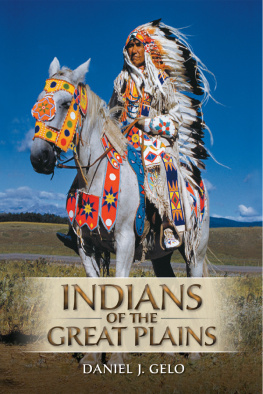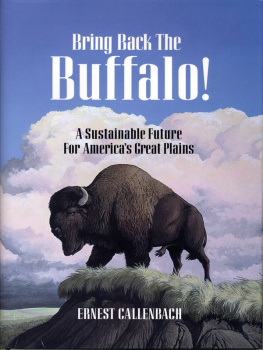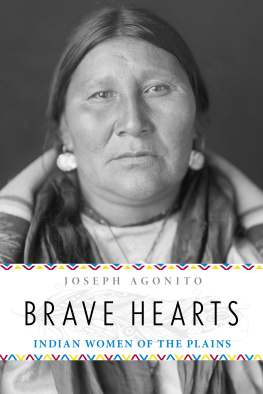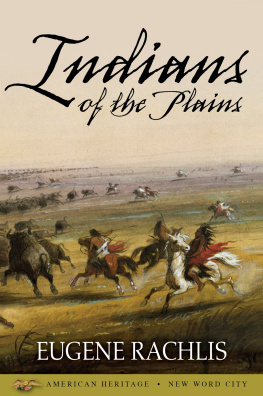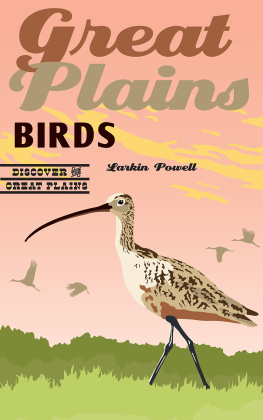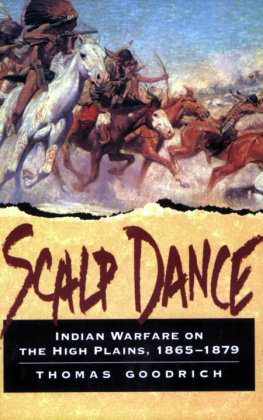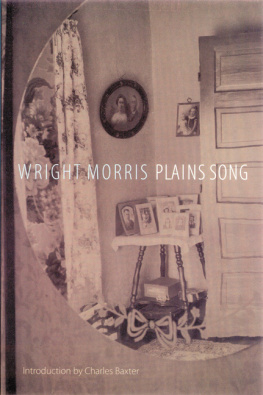Gelo - Indians of the Great Plains
Here you can read online Gelo - Indians of the Great Plains full text of the book (entire story) in english for free. Download pdf and epub, get meaning, cover and reviews about this ebook. City: Great Plains, year: 2016, publisher: Taylor and Francis Ltd : Routledge, genre: Romance novel. Description of the work, (preface) as well as reviews are available. Best literature library LitArk.com created for fans of good reading and offers a wide selection of genres:
Romance novel
Science fiction
Adventure
Detective
Science
History
Home and family
Prose
Art
Politics
Computer
Non-fiction
Religion
Business
Children
Humor
Choose a favorite category and find really read worthwhile books. Enjoy immersion in the world of imagination, feel the emotions of the characters or learn something new for yourself, make an fascinating discovery.
- Book:Indians of the Great Plains
- Author:
- Publisher:Taylor and Francis Ltd : Routledge
- Genre:
- Year:2016
- City:Great Plains
- Rating:4 / 5
- Favourites:Add to favourites
- Your mark:
- 80
- 1
- 2
- 3
- 4
- 5
Indians of the Great Plains: summary, description and annotation
We offer to read an annotation, description, summary or preface (depends on what the author of the book "Indians of the Great Plains" wrote himself). If you haven't found the necessary information about the book — write in the comments, we will try to find it.
Gelo: author's other books
Who wrote Indians of the Great Plains? Find out the surname, the name of the author of the book and a list of all author's works by series.
Indians of the Great Plains — read online for free the complete book (whole text) full work
Below is the text of the book, divided by pages. System saving the place of the last page read, allows you to conveniently read the book "Indians of the Great Plains" online for free, without having to search again every time where you left off. Put a bookmark, and you can go to the page where you finished reading at any time.
Font size:
Interval:
Bookmark:

INDIANS OF THE GREAT PLAINS
Daniel J. Gelo
University of Texas at San Antonio

First published 2012 by Pearson Education, Inc.
Published 2016 by Routledge
2 Park Square, Milton Park, Abingdon, Oxon OX14 4RN
711 Third Avenue, New York, NY 10017, USA
Routledge is an imprint of the Taylor & Francis Group, an informa business
Copyright 2012 Taylor & Francis. All rights reserved.
All rights reserved. No part of this book may be reprinted or reproduced or utilised in any form or by any electronic, mechanical, or other means, now known or hereafter invented, including photocopying and recording, or in any information storage or retrieval system, without permission in writing from the publishers.
Notice:
Product or corporate names may be trademarks or registered trademarks, and are used only for identification and explanation without intent to infringe.
Credits and acknowledgments borrowed from other sources and reproduced, with permission, in this textbook appear on page 375 within text.
ISBN: 9780131773899 (pbk)
Cover Design: Jayne Conte
Cover Designer: Bruce Kenselaar
Library of Congress Cataloging-in-Publication Data
Gelo, Daniel J.,
Indians of the Great Plains/Daniel J. Gelo.1st ed.
p. cm.
Includes bibliographical references and index.
ISBN-13: 978-0-13-177389-9 (alk. paper)
ISBN-10: 0-13-177389-5 (alk. paper)
1. Indians of North AmericaGreat PlainsTextbooks. I. Title.
E78.G73G45 2011
978.00497dc22
2010053159
Please visit the companion website at www.routledge.com/9780131773899



The idea for this book came most directly out of a conversation with Charles Hudson, who gave me the modest and deceptively simple advice, why dont you expand on your class notes, thats what I did, referring to his outstanding text The Southeast Indians. In this kindly way, Charles provided both a model for the modern regional survey of Indian cultures and the needed assurance that something similar could and should be attempted for the Plains.
As a teacher of a college course on the Indians of the Great Plains, I have long been troubled by the lack of a suitable text. Those that exist I found to be dated or needing lots of supplementation. The first purpose of this book is to provide a contemporary rendering based on recent scholarship. Secondly, I seek to bring readers up to date with historical and cultural developments of the twentieth and twenty-first centuries and emphasize that Plains societies and cultures are continuing, living entities. Along the way I attempt to present wide and balanced coverage of the many different tribal groups, with more than the usual attention to Canadian and southern populations along with the famous and populous Sioux and their close neighbors. I was also intent on providing a single text that could support undergraduate lecture course instruction with, if desired, few or no supplementary readings and with an organization that lends itself to the usual weekly topical explorations in a semester survey. Lastly, I hope that this book will function as a reference for general readers that in its comprehensiveness and level of detail sits comfortably and usefully among the myriad journal articles, scholarly monographs, popular press books, and encyclopedias on Plains Indians and derivative subjects.
The outlook and aim of this work is anthropological, and readers will no doubt perceive in it all of the reputed virtues and vices of this disciplinary approach. I am not a Native American and would claim a privileged perspective only so far as I have spent time, during and after long training in cross-cultural theory and method, living in and talking with members of Indian communities fairly steadily for the past 29 years. During this time I have been adopted into a Comanche family and initiated into a Comanche tribal association, was designated an Ambassador to the Comanche Nation by proclamation of the Tribal Chairman, and learned to speak, sing, and dance in Comanche idioms (all quite imperfectly). Through the years I have also enjoyed interviews, casual conversations, and quiet times with members of the Kiowa, Plains Apache, Southern Cheyenne, Ponca, Omaha, Osage, Pawnee, and Lakota tribes. I have been especially close with the late Comanche elders Margaret Thomas and Carney Saupitty, Sr., and their families. The additional Indian people who have helped me learn about their cultures are too numerous to all thank here, and I must be satisfied in having recognized several of them in other publications. Though proud of these relationships, I fully recognize the limits of my own expertise. So I have made an effort to include the personal identities, voices, and viewpoints of Native American people, along with material in Native languages, wherever possible in this text.
This volume also depends on dozens of other researchers and Native consultants whose knowledge is available in printed sources. Most properly each fact or idea presented in the text would be immediately supported with citations from the literature through footnoting or parenthetical referencing. But for a work of this kind, I felt that readability was paramount and therefore, except where there are direct quotations or key concepts, the sources are simply collected at the ends of chapters. In most cases the background documentation for each topic should be evident from the titles of the works listed in the sources section and cited fully in the bibliography. When multiple editions of a source existed, rather than automatically citing the earliest ones I chose to cite those most likely to be available widely in university and public libraries. For similar reasons I have not shied away from citing edited volumes and anthologies that conveniently synthesize materials in such areas as archaeology and mythology. I hope readers, and students in particular, will contemplate what I present critically and follow the trail traces deeper into the supporting literature.
I take sole responsibility for any weaknesses or errors in this work, but several organizations and people must be credited for its completion and whatever good may come of it. I am forever grateful to the Wenner-Gren Foundation for Anthropological Research, Inc. for funding my initial Plains fieldwork with a student grant-in-aid. Bill and Marla Powers were and remain the best teachers, mentors, and friends a budding and former (or, rather, continuing) student could have hoped for. David P. McAllester was also monumentally supportive. I am also deeply indebted to my other professors at Rutgers, my colleagues and correspondents in the fields of Plains and Great Basin anthropology, and my former or current companions in the University of Texas at San Antonio (UTSA) Anthropology Department, especially Robert M. Hill II, James H. McDonald, and Laura J. Levi. Five administrators at UTSA have been unfailingly encouraging and generous in allowing me some semblance of a research and writing schedule amid decanal duties: Guy Bailey, David R. Johnson, Rosalie Ambrosino, Julius Gribou, and John H. Frederick. Steve Tomka and Bruce Moses at the UTSA Center for Archaeological Research provided artifact images. At the UTSA Institute of Texan Cultures, Patrick Lemelle was cheerful and prompt in helping to locate photos. Sharon A. Silengo at the State Historical Society of North Dakota also lent critical support. UTSA graduate students Robert Flourney, Ruth Matthews, Deborah Wagner, and Maria-Raquel Weaver assisted in the research for this book by obtaining and synopsizing reference materials. My wife M. Gabrielle Gelo and our sons Terence and Thomas were most understanding of all the many hours of travel, reading, and writing, over several years, necessary to finish the volume. Nor would the work have been at all possible without the initial encouragement of Bill Stinner Trimble, the unendingly patient vision and guidance of Nancy E. Roberts, and the skillful assistance of Kate Fernandes, all of Pearson. George Jacob of Integra did masterly editorial work. Finally, I am beholden to eight reviewers for the press, who offered many helpful suggestions that improved the accuracy, clarity, and relevance of the text: Robert M. Hill II, Tulane University; Clarence R. Geier, James Madison University; James Berry, University of Evansville; Janet O. Frost, Eastern New Mexico University; Christine L. Fry, Loyola University Chicago; Richard A. Krause, The University of Alabama; Kathleen Pickering, Colorado State University; Betty A. Smith, Kennesaw State University. I offer my heartfelt thanks to all of these friends for their help.
Next pageFont size:
Interval:
Bookmark:
Similar books «Indians of the Great Plains»
Look at similar books to Indians of the Great Plains. We have selected literature similar in name and meaning in the hope of providing readers with more options to find new, interesting, not yet read works.
Discussion, reviews of the book Indians of the Great Plains and just readers' own opinions. Leave your comments, write what you think about the work, its meaning or the main characters. Specify what exactly you liked and what you didn't like, and why you think so.

